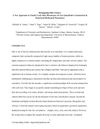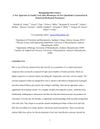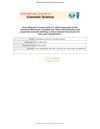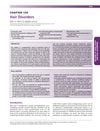TLDR Curly hair is mechanically different from straight hair and may need new testing methods.
The study "Understanding Curly Hair Mechanics: Fiber Strength" from January 1, 2020, investigated the mechanical properties of curly hair fibers, revealing that curly fibers exhibit unique stress-strain behavior, particularly in the toe region, which contributes significantly to their tensile strength. The research highlighted that traditional tensile testing methods might underestimate the strength of curly hair due to preparation-induced strain. The study involved 25 donors and used 10-40 fibers per donor, suggesting that curly hair's tensile behavior is comparable to coiled springs and muscle tendons. The findings emphasized the need for large-scale studies and improved testing methods to accurately measure the strength components of curly hair.
16 citations
,
June 2017 in “PLoS ONE” A 6-group hair classification is more reliable for drug testing than an 8-group system.
33 citations
,
July 2007 in “Skin research and technology” Thicker hair is stronger, regardless of age, gender, or other factors.
95 citations
,
January 2007 in “Human biology” Human hair can be classified into eight types based on physical features, not ethnicity.
86 citations
,
January 1996 in “Clinics in dermatology” Hair can be damaged by daily routines, but protein-based products can protect and improve it.

New methods to classify curly hair types were developed based on shape and strength.

A new system for classifying curly hair types using precise measurements can improve hair care products and cultural inclusion.
 3 citations
,
February 2023 in “ACS omega”
3 citations
,
February 2023 in “ACS omega” Grape seed oil improved hair quality the most, followed by rosehip and safflower seed oils, and reduced damage from shampoo.
 8 citations
,
November 2022 in “International Journal of Cosmetic Science”
8 citations
,
November 2022 in “International Journal of Cosmetic Science” Human hair varies widely and should be classified by curl type rather than race.
 November 2019 in “Harper's Textbook of Pediatric Dermatology”
November 2019 in “Harper's Textbook of Pediatric Dermatology” Understanding normal hair growth and loss in children is key to diagnosing and treating hair disorders.




